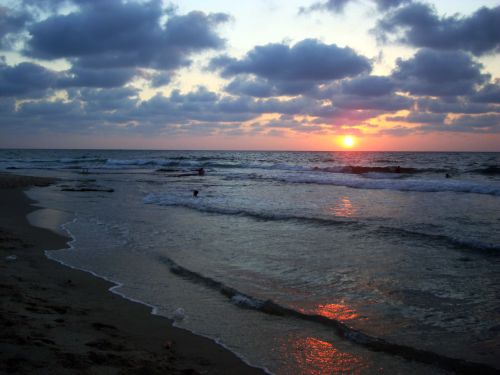Back In Gaza And Little Has Changed
By Eva Bartlett
27 June, 2011
New Internationalist Blog
I am back in the Strip. I left Gaza via the border at Rafah in June 2010, after an 18 month stay. My exit through the Eygpt frontier crossing was a result of pressure put on authorities there to open its border to Gaza. Hosni Mubarak’s regime apparently felt the need to play down the siege a bit as Israeli commandos had just massacred nine Turkish civilians on the Mavi Marmara solidarity flotilla.
The border opened, yet life in Gaza went on as it always has done under siege: functioning, but only just. Visa-holders and medical patients crossed through into Egypt but to the vast majority of other Palestinians in Gaza with dreams of breathing different air, even if just for a week, it remained closed.
In late May this year, post-Mubarak Egypt declared Gaza’s border permanently open, but shortly after closed it again. Now it’s open once more but the Rafah crossing still limits men between the ages of 18-40 from crossing unless they hold special permits.
But dreams of travel, study, medical care aside, the status of the Rafah border crossing means next to nothing in terms of the siege effects: Israel still controls what enters and exits Gaza, the power still cuts out every day, and the medical crisis is worse than ever. Much of Gaza is still in ruins after Israel’s deadly 22-day assault, which ended in January 2009, leaving 1,400 Palestinian dead.
A year on, in this enclosed 40-something km strip of land flanked by the Mediterranean sea, I notice some things have changed, but the big picture hasn’t.
The water is still contaminated from untreated sewage pumped into the sea for want of treatment facilities. By World Health Organization standards, roughly 95 per cent of Gaza’s water is not safe to drink.
Diesel-fueled generators sputter into action, polluting the air and silence, when the power cuts out, day or night. Unemployment has reached 45 per cent, one of the highest rates in the world. Fishermen are still shot at, shelled and arrested by the Israeli navy inside Palestine’s waters – even as close as three miles from the coast. And farmers continue to be pushed off their land near the border by Israeli shootings and shelling.
The few changes I see are superficial. Nasser street sports new paving – badly needed for years – but now only adequately serves those transiting to the north, university-goers, and the various hospitals and clinics leading off the street. When I left last year, asphalt from Gaza’s once-stunning, now decomposing airport was being ground to make ‘new’ roads.
A new ice cream shop has opened by the sea, near the hotels and cafes. They cater to Gaza’s minutiae percentage of middle class (80 per cent of the Strip is food-aid dependent, surviving on high-carb, few veggies, low protein diets) and the foreign journalists and aid workers with money to spend.
I can see that for some people the mood is brighter, with hopes of government reconciliation – something all Palestinians want.
But when I revisit Abu Taima, Jaber, and other farming and fishing friends, I realize that life has not improved. The only hope they draw is from their religious beliefs and Palestinian samoud (steadfastness).
Abu Taima has finally abandoned his land that lies close to, but not inside, the 300 metres flanking the Gaza-Israel border. Israel has unilaterally declared this land off-limits to Palestinians and shoots to kill within up to even two kilometres of the border in places.
In mid-2009, when I first met Abu Taima’s family, I was walking on their land southeast of Khan Younis as they planted, then months later harvested, wheat, lentils and low-maintenance vegetable crops. Even though they were regularly shot at by Israeli soldiers from jeeps, dirt mounds, military towers and automated remote machine gun towers along the border, the family persisted in planting and harvesting.
Between the Israeli soldiers and the lack of rain – his cistern destroyed by Israeli soldiers – the odds are against the Abu Taima’s land being worked, as with so many other farmers. When I saw the elder of the Abu Taima family two weeks ago, his bright energy was gone, replaced by a fatigued sadness.
Jaber and his wife Leila continue, by day, to visit their home – just under 500 metres from the border. A month before I left last year, the house was again assaulted by Israeli soldiers and bulldozers which completely destroyed the remains of his already destroyed chicken barn, tore down grape vines, destroyed the stored harvest of wheat and the onions he was to sell at market that week, and once again trampled their hopes to live simply off the land. It was the third major Israeli invasion on his home, not counting the routine shootings from the border.
It was the first time I saw the usually resilient Jaber cry. He just broke down and sobbed.
During their daytime visits Jaber and his wife try to cultivate what vegetables they can for their own consumption, and return by night to a rented home for themselves and their seven kids, at a price they can ill-afford.
***

It is the beginning of summer and the searing heat. The sea, with all its siege-made flaws, continues to provide relief for families who, with little money, no travel options and no other recreation possibilities, flock to the beaches with thermoses of tea to escape the stifle of another power outage at home.
One of the things that haven’t changed is Gaza’s sunset. It’s as shockingly beautiful as ever.
Photo: Sunset in Gaza. Eva Bartlett.
Comments are not moderated. Please be responsible and civil in your postings and stay within the topic discussed in the article too. If you find inappropriate comments, just Flag (Report) them and they will move into moderation que.


